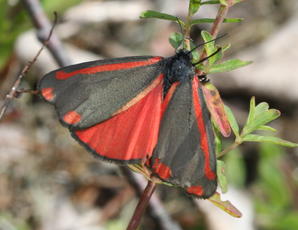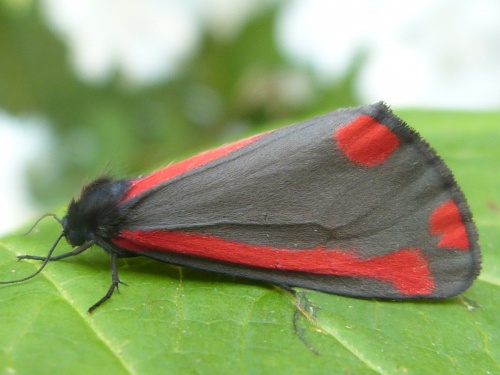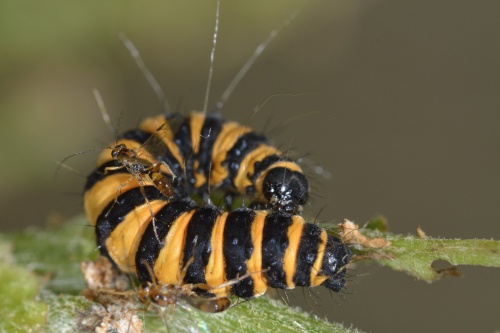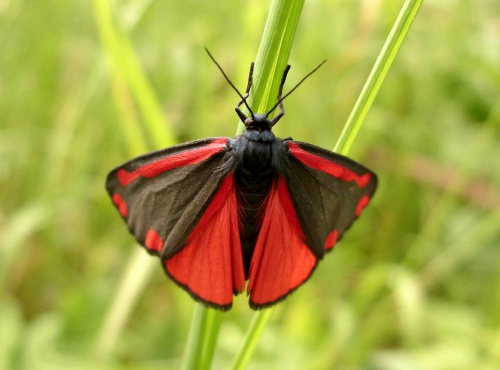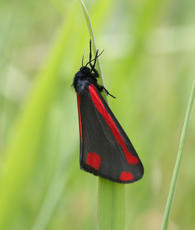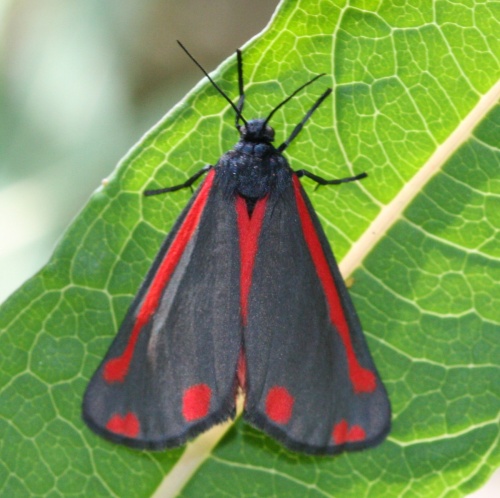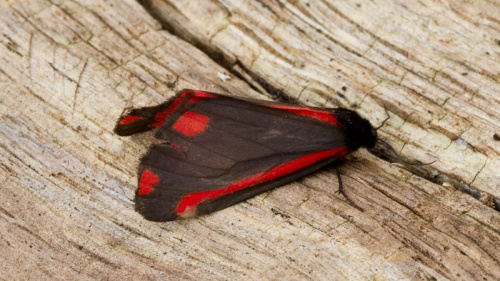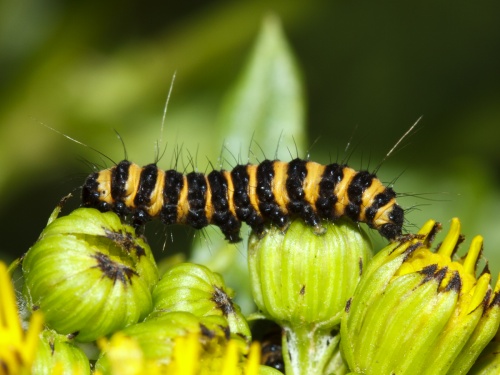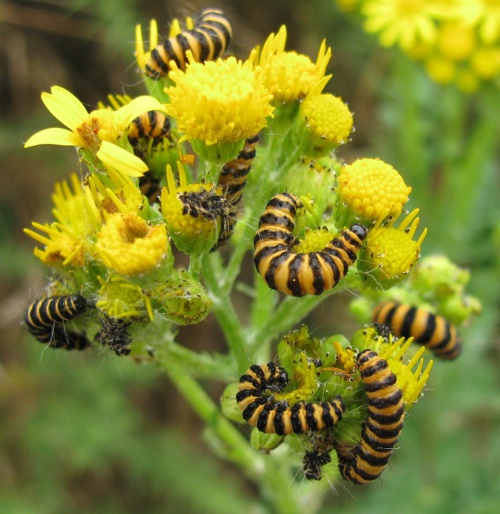Cinnabar - Tyria jacobaeae
Wingspan 32-42 mm. Resembling no other British species, except perhaps the Burnets (Zygaenidae). The forewings are black with a red bar and the hind wings are all red. The caterpillars of the Cinnabar moth feed on the leaves and flowers of Common Ragwort (Senecio jacobaea). Occasionally they are found on other ragworts and groundsels.
Wherever Ragwort grows. Usually in long grassy places.
The flight period is May through July. It is generally nocturnal but is quite often disturbed during the day from long grass, low herbage etc. At night, it comes to light.
The distinctive larvae, with their yellow and black hoops, generally feed gregariously on Common Ragwort and other related plants.
This is a fairly common moth in much of Britain. In a recent survey to determine the status of all macro moths in Britain this species was classified as common.
Fairly common in Leicestershire and Rutland. L&R Moth Group status = A (common and resident)
Leicestershire & Rutland Map
Enter a town or village to see local records
MAP KEY:
Yellow squares = NBN records (all known data)
Coloured circles = NatureSpot records: 2020+ | 2015-2019 | pre-2015
UK Map
Species profile
- Common names
- The Cinnabar, Cinnabar
- Species group:
- Moths
- Kingdom:
- Animalia
- Order:
- Lepidoptera
- Family:
- Erebidae
- Records on NatureSpot:
- 847
- First record:
- 12/07/1951 (Wesley, Isaac)
- Last record:
- 11/09/2023 (axon, kaye)
Total records by month
% of records within its species group
10km squares with records
The latest images and records displayed below include those awaiting verification checks so we cannot guarantee that every identification is correct. Once accepted, the record displays a green tick.
In the Latest Records section, click on the header to sort A-Z, and again to sort Z-A. Use the header boxes to filter the list.


